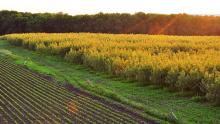Lignite-based humus as instant, lasting soil booster

Unlike fresh humus such as compost, stable humus makes a long-term contribution to soil fertility. It takes many years to form naturally - but now, for the first time, a manufactured granulate is available. The SME offering this product as an instant, lasting fix for tired soils is carrying out EU-funded research and development for its commercialisation.









